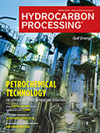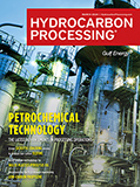Turbines
Reveal the unmonitored risks in your rotating equipment: The effects of torsional vibration—Part 2
In recent case studies, unexpected and unmonitored torsional vibration resulted in sudden failures, costly downtime and potential safety hazards. Part 1 of this article, which appeared in the January issue of <i>Hydrocarbon Processing,</i> examined the origins of torsional vibration and case histories to drive an understanding of the unmonitored risk existing at many industrial sites.
Reveal the unmonitored risks in your rotating equipment—Part 1
On December 15, 2002, an anomalous event occurred in a steam turbine of Unit 2 at the South Texas Project Electric Generating Station, a pressurized water reactor (PWR) nuclear reactor near Bay City, Texas. The ensuing investigation concluded that a blade was ejected from a low-pressure stage, and detailed inspections revealed additional cracked blades in several stages.
Reliability: Things rarely heard at reliability conferences
We can only guess how many reliability conferences we have attended since accepting job offers in the refining or chemical processing industries. In my case, starting in 1965, it is somewhere between 60 and 80. If, in each of these conferences I listened to six presentations, the number of sessions attended is perhaps 400.
Can ammonia be a future energy storage solution?
Ammonia is well known as a fertilizer. However, it is also a potential carbon-free fuel and an excellent solution for storage of renewable electricity, especially if the syngas needed for producing the ammonia is made by electrolysis.
Reliability: When slow-rolling machines can cause failures, and how to avoid them
All the book learning in the world will fail if we do not use common sense. We could also say that we need to think things through and should recognize that intuitive logic can lead us astray. If that sounds like semantic banter, let us zero in on three practical field examples that illustrate the issues at hand.
Consider installing a VFD to increase reliability and savings
The Petronor oil refinery is in the north of Spain and is part of REPSOL Group. In 2019, the facility upgraded the driver of a reformer’s draft fan from a general-purpose steam turbine and gearbox to a variable frequency drive (VFD) electric motor.
Hydrocarbon Processing Awards Winners
<i>Hydrocarbon Processing,</i> the downstream processing sector’s leading technical publication, has announced the winners for its third annual awards. The <i>HP</i> Awards celebrate innovative technologies and people that have been instrumental in improving facility operations over the past year.
Hydrocarbon Processing Awards
<i>Hydrocarbon Processing,</i> the downstream processing sector’s leading technical publication, has announced the finalists for its third annual awards.
Separate fine solid particles from dusty air with a uniflow cyclone
Fine particles are usually collected by dry collectors, wet collectors, electrostatic precipitators and filters, at the commercial level.
Understand net gas compressor control logic from a process engineering standpoint
In a refinery or petrochemical plant, certain equipment can create “gray areas” between process engineers and instrument engineers.

- China's March jet fuel exports jump 77.4% from a year earlier 4/18
- Nigeria strikes deal with Shell to supply $3.8-B methanol project 4/18
- Singapore fuel oil stockpiles rebound to 8-week high on higher imports 4/18
- Clariant launches new CATOFIN 312 propane dehydrogenation catalyst 4/18
- Solvay inaugurates new blowing agent production unit in Rosignano, Italy 4/18
- Meridian Energy Group’s Davis Refinery Project in North Dakota (U.S.) will be the world’s first net-zero carbon refinery 4/17




